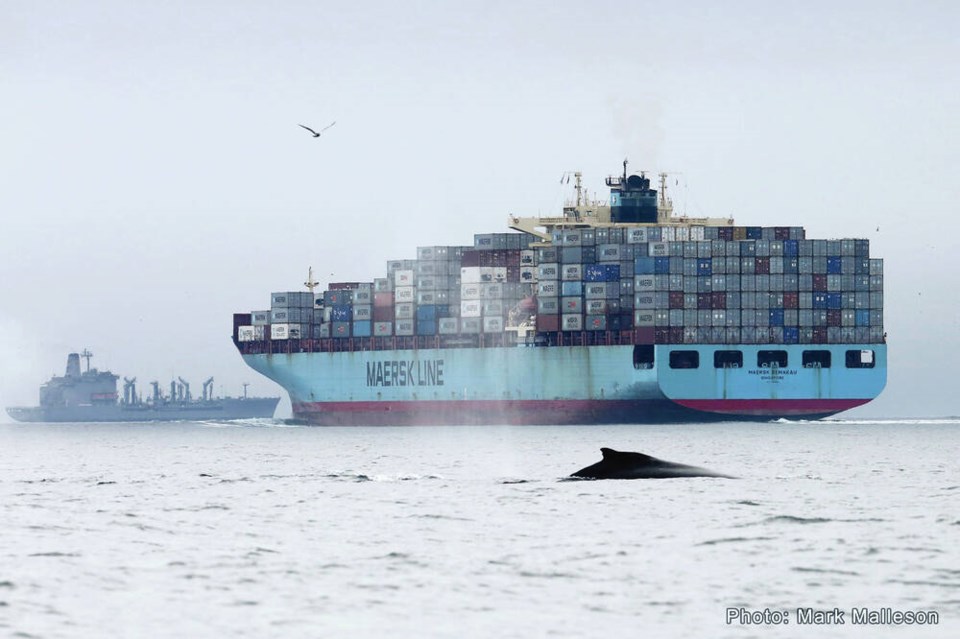Researchers are celebrating the strong recovery of the humpback whale, which was hunted to near-extinction around the Salish Sea more than a century ago.
But there is a sense of caution as the increasing numbers of whales is raising the risk of ship strikes and entanglements.
This year, 396 individual humpbacks were documented in the waters around Vancouver Island — a total that includes 34 mothers with their first-year calves.
It’s an increase from the 293 humpbacks recorded in the same area five years ago and the highest number in a single year since record-keeping started more than two decades ago, according to Tasli Shaw, lead for the Humpback Whales of the Salish Sea Project.
The group collects sightings from researchers, ecotourism captains and naturalists and citizen scientists.
Humpbacks were hunted for their blubber, which was rendered to oil, and the population was decimated in this region. When protective measures were put in place in the 1960s, the whales started making a comeback.
The biggest threat now for humpbacks is ship strikes and entanglements in fishing and crabbing lines — whales often drag floats and anchors for months before succumbing to exhaustion and drowning.
Ship strikes are believed to have caused at least two of the five humpbacks deaths discovered on the North Island and Haida Gwaii in November.
This month, a mature female humpback nicknamed Moon swam from the north coast of B.C. to the breeding grounds off Hawaii with a severely damaged spine believed to be the result of a ship strike. The whale is severely emaciated from the 55-day journey and isn’t expected to return in the spring.
“The Salish Sea has become the whale equivalent of a busy school zone,” said Lisa Spaven of Fisheries and Oceans Canada’s Cetacean Monitoring and Research Project.
Spaven said monthly surveys show whales are present in all months throughout the region, making the Salish Sea an area of “considerable year-round overlap” between whales and commercial and recreational vessel traffic and fishing.
While some mistakenly believe humpbacks change their behaviour to avoid approaching vessels, researchers say the whales are often oblivious to boats and fishing gear — they don’t have the bio sonar of toothed whales and are focused on feeding, often staying in one area and surfacing in unpredictable patterns.
They may also be sleeping or nursing just below the surface.
Jackie Hildering of the Canadian Pacific Humpback Collaboration group, which catalogues the whales, said vessels slowing down, increasing vigilance and distance from the whales and understanding humpback behaviour can reduce threats.
“We are so fortunate to have a second chance with humpback whales,” she said.
Humpbacks are not just passing through the Salish Sea — researchers say many return to specific areas to feed year after year and stay for months at a time.
The whales are still present in the winter off the coast of British Columbia. Some have not yet left on their migration to the warm-water breeding areas off Hawaii, Mexico and Central America.
Of the 396 humpbacks recorded this year, most have been seen in the Salish Sea in previous years. Monarch, known to researchers as BCZ0180, has returned 20 years in a row and is often still feeding in the Salish Sea in winter.
“The Salish Sea is a place where many humpback whales have learned to find food and how best to capture it,” said Shaw. “We see the highest number of sightings in the fall, and it is the same whales year after year who we see socializing, feeding, and resting within the waters of the Salish Sea.”
A report in 2020 by Ocean Watch said before humpbacks were protected in 1966, at least 5,600 of the whales were harvested from whaling stations along the B.C. coast starting in 1908, which decimated the population.
The Salish Sea is one of the last historical areas that humpbacks have “re-occupied” since the whaling days, said the report.
Ocean Watch said a small and possibly resident population of humpbacks was extirpated by 1909, likely in the inland waters of the Strait of Georgia extending south to Puget Sound.






